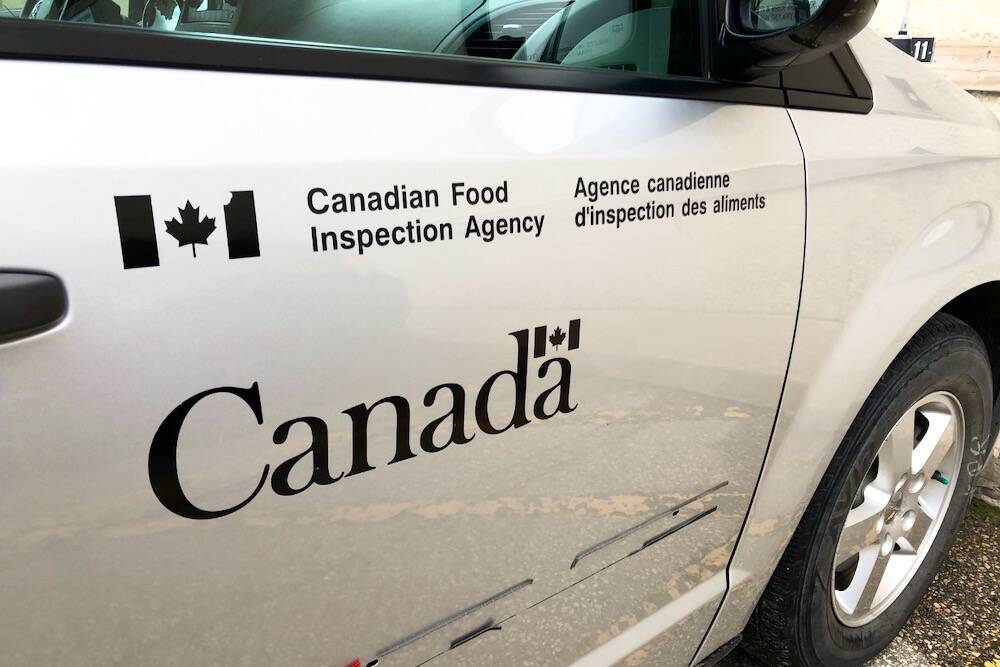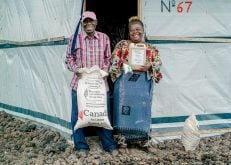When it comes to flax, it’s a tale of two provinces this spring.
In its June estimates of principal field crops, released Tuesday morning, Statistics Canada pegged Saskatchewan flax area at 960,000 acres – up from 775,000 acres in 2012 and 535,000 in 2011.
In Manitoba, however, flax acres are headed rapidly in the opposite direction. StatsCan said Manitoba growers would seed 85,000 acres of flaxseed, down from 155,000 in 2012.
“I’m surprised that the drop is that much,” said Ernie Wiens, a Manitoba Flax Growers Association director who farms near La Salle, Man. “On the other hand if we look at what’s happening in Manitoba, especially in our area, there are so many acres that have shifted to corn and soybeans… . There are only so many acres to go around … and something has to give. In Manitoba’s case, especially in the valley, it’s flax.”
Read Also

B.C. ostriches culled, CFIA confirms
Ostriches on an embattled Edgewood, B.C. farm have been culled after a prolonged legal battle, the Canadian Food Inspection Agency has confirmed.
In contrast, Saskatchewan producers turned to flax this spring because prices are strong, said David Sefton, a grower from Broadview, Sask.
Flax is selling in the $15 to $16 per bushel range, which convinced farmers to expand acreage or give flax a try.
“The seed people were telling us that they were selling out… so it (the acreage gain) is not a surprise,” said Sefton, a Saskatchewan Flax Development Commission director. “I think there are people that have been out of flax for a number of years, for various reasons, that put some flax in (this year).”
In total, Stats Can estimated the national flax crop at 1.135 million acres, up significantly from 980,000 acres last year and 740,000 in 2011. William Hill, Flax Council of Canada president, said the industry was expecting around 1.2 million acres.
Flax prices are robust right now because Chinese demand has offset a steep decline in sales to Europe, Sefton explained. The European market for Prairie flax crashed in the winter of 2009-10, after trace quantities of a genetically modified variety of flax, known as Triffid, was discovered in shipments from Canada.
On top of the Triffid quandary, flax acres suffered in 2011 when excess precipitation swamped hundreds of fields in southern and eastern Saskatchewan.
“We had some very wet conditions in the traditional flax growing areas,” said Sefton, who’s encouraged by the oilseed’s rebound in Saskatchewan.
Strong prices may have boosted acres in Saskatchewan but the crop isn’t economically competitive in Manitoba, Wiens said.
“We sold our flax about a month and a half ago. We actually sold it for $17 (per bu.),” he said. “The price is good but when you can only grow 15 or 20 bu. (per acre) flax, it’s just hard to pencil out against the other crops.”
Over the last couple of years, hot summers hammered flax yields in Manitoba. In the Red River Valley, flax yields averaged about 15 bu. per acre in 2012. In comparison, soybean yields averaged 35 bu. per acre.
“Flax, with its limited root system, hasn’t coped well (with the heat),” Wiens said, consequently, flax has virtually vanished from the valley.
“I have seen the odd, small field of flax. But it is few and far between.”
Flax’s demise in Manitoba is distressing because the crop has a lot to offer, such as agronomic advantages for growers and health benefits for consumers, Wiens said.
“It fits in well with rotations, it’s a good way to break the disease cycle. Farmers in this area often say we grow our best wheat after flax. It’s got a lot of pluses.”
If the Statistics Canada flax estimates are correct, Alberta may produce more flax than Manitoba this year.
Alberta farmers are expected to seed 90,000 acres, up from 50,000 in 2012.















